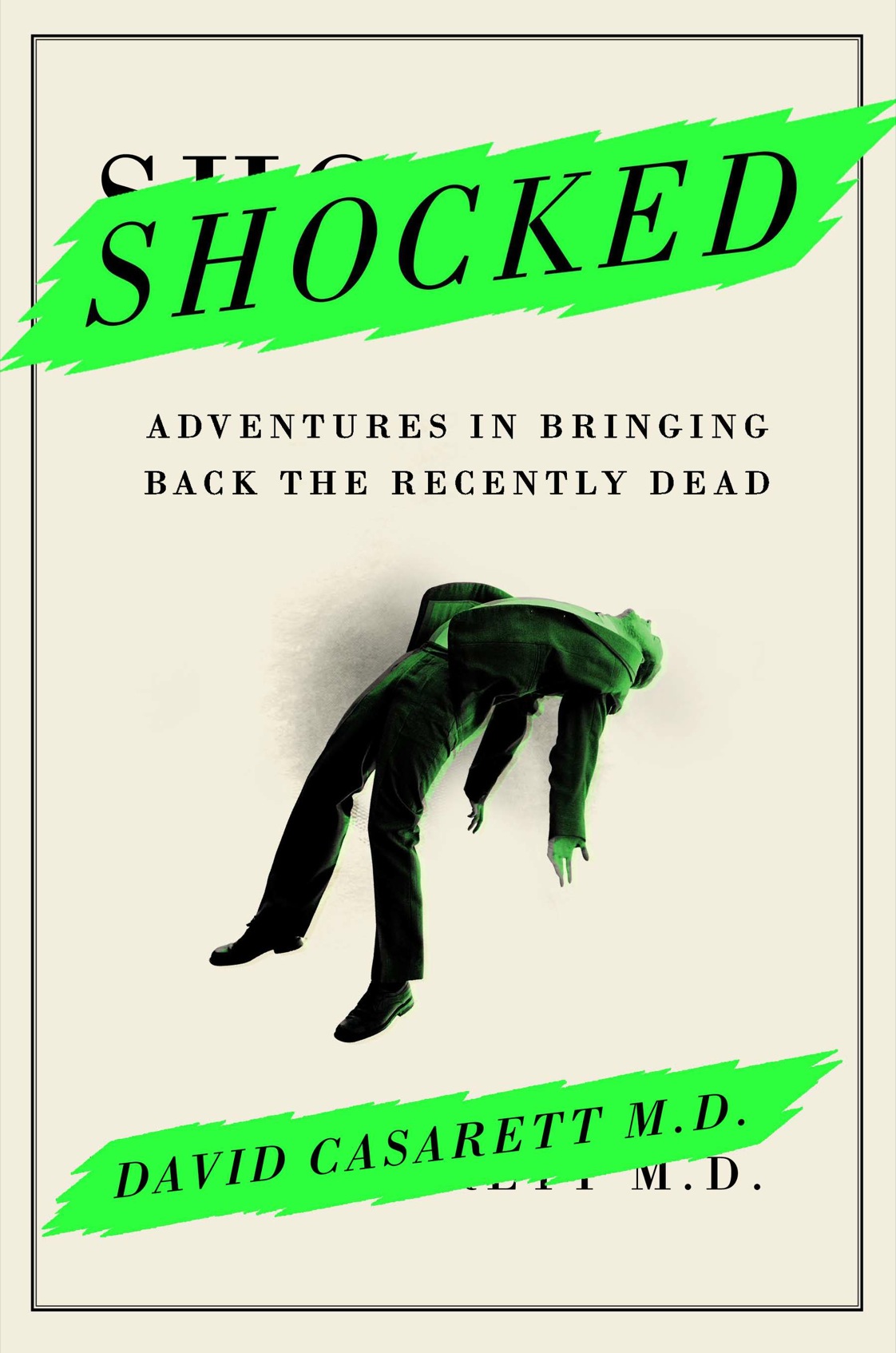
Shocked
Adventures in Bringing Back the Recently Dead
ماجراهای بازگشت به گذشته به تازگی مرده
کتاب های مرتبط
- اطلاعات
- نقد و بررسی
- دیدگاه کاربران
نقد و بررسی

May 12, 2014
In this laid-back book about electroshocking people back to life, hospice doctor Casarett addresses the “financial ethical, and emotional” costs of life-saving resuscitation while asking, “What happens when we test the boundaries of life?” He wanders amiably through research on death, resuscitation technologies, hibernation, suspended animation, and hypothermia, lingering longer on the personalities—and stories—behind studies than on the studies themselves. Readers learn the relatively unsurprising news that cardiopulmonary resuscitation via electric shock is often effective, but no cure-all, sometimes leaving patients who have underlying disorders in bad shape. Similarly unsurprising is the news that humans have not yet learned how to hibernate for the winter, place ourselves in suspended animation for trips to space, or cryopreserve ourselves into another life. But Casarett does point out strides made in research and technology: scientists know how to freeze the body just right—via hypothermic circulatory arrest—so our brains can survive stopped-heart procedures, and are studying the chemical wizardry hibernating animals employ, in the not unrealistic expectation that humans will someday be able to follow suit. Casarett accessibly reveals the work being done that may enable us to sleep far more, and so travel far further—in both place and time—than we ever dreamed.

July 1, 2014
Despite the title, this book is more about cooling the human body than electrocuting it. The "science of resuscitation," as Casarett (Sch. of Medicine, Univ. of Pennsylvania) refers to his topic, has its origins in 18th-century Holland and England, where the recently drowned were subjected to a number of treatments, both effective (tied to the back of a horse and trotted up and down) and ineffective (gagged with a feather). Unfortunately, Casarett comes across as overly credulous. He describes everyone he encounters as looking just as one might expect someone of that profession to appear. Additionally, some of the theories he explores sound more sf come to life, particularly the long section on cryonics (freezing the body after death for later revival). More effective is the author's discussion of how advanced resuscitation techniques blur the line between life and death. Casarett describes briefly a personal experience with death that led him to his current career as a hospice doctor and to question when extraordinary efforts to save a life go too far. VERDICT This book may work for readers of Mary Roach's Stiff, in which the author's interest is more theoretical.--Cate Hirschbiel, Iwasaki Lib., Emerson Coll., Boston
Copyright 2014 Library Journal, LLC Used with permission.

July 1, 2014
Shocked delves into the science of resurrection, looks at current research on resuscitation, and explores future possibilities of prolonging life. Casarett, a hospice physician, describes how modern medicine can sometimes bring people back to life (e.g., after a cardiac arrest), how technology alters the way people die, and the troubling medical limbo positioned between life and death. The history of cardiopulmonary resuscitation is amusingly chronicled. The financial, emotional, and ethical costs of reviving a newly or nearly deceased person are addressed. Choices about delaying natural death can be unexpectedly difficult. Readers learn that chest compressionsfast and hardare the key to successful CPR and that the benefits of lowering the body temperature and slowing the metabolism of victims requiring resuscitation are immense. Suspended animation, hibernation, cryonics (the use of ultracold to preserve life), injections of the chemical compound adenosine monophosphate, the use of automatic external defibrillators (AEDs), and implantable cardiac defibrillators are some of the topics and treatments discussed. Casarett's inquiry makes for entertaining, informative, and, at times, electrifying reading.(Reprinted with permission of Booklist, copyright 2014, American Library Association.)

























دیدگاه کاربران